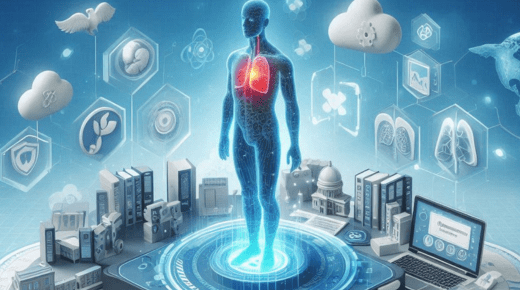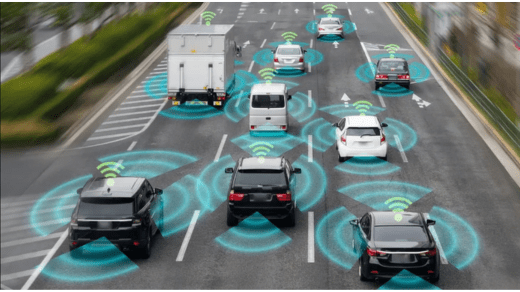Imagine a world where medical students can explore the human body in three dimensions, right from their classrooms or homes. This isn’t science fiction—it’s the reality we’re stepping into with 3D learning platforms. As someone passionate about both technology and education, I can’t help but be excited about the transformative potential these tools bring to medical training.
3D learning platforms offer an immersive experience that traditional textbooks and 2D images simply can’t match. By integrating these advanced tools into medical education, we’re not just enhancing learning; we’re revolutionizing it.
Students can now interact with virtual organs, perform simulated surgeries, and gain a deeper understanding of complex anatomical structures in ways that were previously unimaginable. Similarly, advanced 3D visualization tools for vaping allow users to explore the intricacies of vaping products, offering a unique learning and purchasing experience.
The Evolution of Medical Education
Medical education has undergone significant changes over the years. Initially, education relied heavily on textbooks and classroom lectures. Cadaver dissection served as the primary means to learn anatomy, though access was often limited by resources and legal restrictions.
Advancements in technology have played a crucial role in transforming medical training. When computers became more prevalent, digital learning resources such as CD-ROMs and online content began to supplement traditional methods. Simulation models and computer-based training programs offered more interactive ways for students to practice procedures.
The introduction of 3D learning platforms marks the latest milestone in the evolution of medical education. These platforms present detailed and interactive views of human anatomy, enhancing the learning experience. Using virtual reality (VR) and augmented reality (AR), students can now engage with realistic simulations, providing a more immersive and practical approach.
While traditional methods like textbooks and classroom instruction retain their value, integrating 3D learning tools offers unparalleled advantages. For example, students can repeatedly practice surgical techniques in a risk-free environment or explore complex anatomical regions that are challenging to access on real cadavers.
The evolution of medical education, driven by technological advancements, has reached a new pinnacle with 3D learning platforms. These tools bridge the gap between theoretical knowledge and practical experience, setting a new standard for medical training.
Understanding 3D Learning Platforms
3D learning platforms have emerged as powerful tools in medical education, leveraging advanced technology to create immersive learning experiences. These platforms extend beyond traditional methods, providing detailed visualizations and interactive simulations.
What Are 3D Learning Platforms?
3D learning platforms use virtual reality (VR) and augmented reality (AR) to create interactive educational environments. These environments allow medical students to explore detailed digital replicas of human anatomy, perform virtual dissections, and practice surgical procedures in a controlled, risk-free setting. Unlike traditional 2D images or videos, 3D platforms offer multi-dimensional perspectives, giving students a deeper understanding of complex anatomical structures.
Key Features of 3D Learning Platforms
Key features of 3D learning platforms include:
- Interactivity: Students engage directly with 3D models, manipulating them to view different angles, zoom in on specific areas, and even simulate surgical procedures.
- Realism: High-definition graphics and simulations provide realistic depictions of human anatomy and medical scenarios, enhancing learning outcomes.
- Accessibility: These platforms are often accessible on various devices, including VR headsets, tablets, and computers, making them versatile for different learning environments.
- Customization: Educators can tailor content and simulations to match specific learning objectives, ensuring that lessons are targeted and relevant.
- Collaboration: Some platforms support collaborative learning, allowing students to work together in a shared virtual space, simulating real-world team-based medical practices.
These features make 3D learning platforms indispensable for modern medical education, providing students with hands-on experience and preparing them for real-life medical situations.
Benefits of Integrating 3D Learning in Medical Education
Integrating 3D learning platforms in medical education offers numerous advantages. These cutting-edge tools enhance student engagement, improve knowledge retention, and provide hands-on practice in a safe environment.
Enhanced Student Engagement
3D learning platforms significantly enhance student engagement. Unlike traditional textbooks, these platforms provide interactive experiences that keep students actively involved. Virtual and augmented reality create immersive environments, encouraging active participation. For example, students can rotate 3D anatomical models and view them from different angles, deepening their understanding through direct interaction.
Improved Knowledge Retention
Students retain information better when learning with 3D platforms. A 2020 study by the Journal of Medical Internet Research found that information retention rates improved by 30% when students used 3D virtual models compared to conventional methods. These platforms present complex medical concepts in more digestible visual formats, aiding long-term memory. Engaging multiple senses simultaneously, such as sight and touch, further reinforces retention.
Hands-On Practice in a Safe Environment
3D platforms offer hands-on practice without the risks associated with real-life procedures. Students can simulate surgeries and other medical procedures in a controlled virtual environment, gaining valuable experience without patient harm. These platforms allow repeated practice, enabling students to build confidence and refine their skills. For instance, virtual dissections provide detailed anatomical insights while preserving real specimens for necessary occasions.
Case Studies and Real-World Applications
Numerous medical institutions are already leveraging 3D learning platforms, demonstrating their tangible benefits and practical applications.
Successful Implementations in Medical Schools
Several notable medical schools have successfully integrated 3D learning platforms into their curricula. For example, Stanford University uses virtual reality for surgical training, allowing students to practice complex procedures without risk. Harvard Medical School employs 3D anatomy visualizations to help students better understand intricate structures. The University of Michigan incorporates augmented reality in anatomy labs, offering an immersive learning experience that traditional methods can’t match. These institutions report higher student engagement and improved retention rates.
Feedback from Students and Educators
Both students and educators have shared positive feedback on the use of 3D learning platforms. Students appreciate the interactive and immersive nature of these tools, noting that they make learning more engaging and easier to understand. One medical student stated, “Using VR for surgical practice helped me feel more confident during actual procedures.” Educators also highlight the platforms’ ability to enhance teaching methods, providing detailed visualizations that support their explanations. An anatomy professor noted, “3D models allow me to illustrate complex concepts more effectively than traditional textbooks ever could.” These endorsements underline the substantial impact of 3D learning platform integration in medical education.
Challenges and Considerations
Integrating 3D learning platforms into medical education brings several challenges. Addressing these is crucial for successful implementation.
Technological Barriers
Deploying 3D learning platforms involves overcoming various technological barriers. High-speed internet and advanced hardware are prerequisites for seamless operation. Not all medical institutions have the infrastructure to support these requirements. Additionally, 3D applications can be complex to integrate with existing learning management systems (LMS), necessitating IT support and frequent updates. Technical glitches and system incompatibilities disrupt the learning process, reducing the effectiveness of 3D platforms.
Cost and Resource Allocation
Implementing 3D learning platforms requires substantial financial investment. Initial costs include purchasing hardware like VR headsets and powerful computers, along with software licenses and custom application development. Ongoing expenses cover maintenance, software updates, and IT support. Resource allocation becomes challenging, especially for smaller institutions with limited budgets. Proper funding and strategic planning are essential to ensure long-term sustainability and effectiveness of 3D learning tools.
Future Prospects of 3D Learning in Medicine
The future of 3D learning in medical education promises substantial advancements. Emerging technologies and evolving methodologies provide new opportunities for innovation and long-term impact.
Innovations on the Horizon
Several key innovations are set to revolutionize 3D learning in medical education:
- AI-Driven Analytics: Integrating artificial intelligence with 3D platforms will offer personalized learning experiences, allowing students to receive real-time feedback and tailored content based on their performance.
- Haptic Feedback: Advanced haptic technology will make simulations more realistic by providing tactile responses. This boost in sensory feedback will enhance the training of surgical techniques and procedures.
- Collaborative Virtual Environments: Students and educators will engage in shared 3D spaces, fostering collaborative learning and enabling remote interaction. Institutions worldwide could utilize these environments to offer joint courses and international training sessions.
Long-Term Impacts on Medical Training
Over the long term, 3D learning platforms will fundamentally transform medical training:
- Skill Retention: Immersive 3D simulations lead to better skill retention compared to traditional methods. Students will practice procedures repeatedly, embedding knowledge more deeply.
- Reduced Training Costs: Although initial investments are high, 3D learning platforms could reduce overall training costs by minimizing the need for physical materials and live subjects. Virtual dissections, for example, eliminate the expenses associated with cadavers.
- Expanded Access to Medical Education: 3D learning platforms will democratize medical education by making high-quality resources accessible to remote and underfunded institutions. This will help address disparities in medical training globally.
Emphasizing these innovative and impactful prospects ensures medical education remains at the forefront of technological advancements, ultimately improving patient care and healthcare outcomes.




